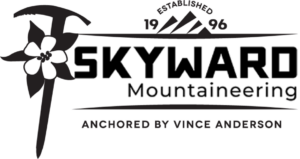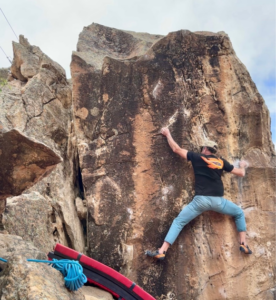
It is common now days to hear about “gym to crag” climbing courses to help those who primarily or exclusively climb indoors safely make the transition to climbing outdoors. After all, climbing at its core is an outdoor sport and that is what most indoor climbers aspire to do at some point. Climbing indoors has opened the world of climbing to many more people in places and cultures where it was never quite possible before. It also helps concentrate the acquisition of movement skills and speed up the learning curve. Climbing exclusively outdoors can be a slow process of gradual improvement. After even a few months of regular gym climbing, many folks can with some guidance, easily make the transition to safely climbing easy to moderate routes outdoors.
This same sort of approach can be used in preparing oneself for the goals of reaching lofty summits beyond just the top of the cliff. I think the crags, and even boulders, are a great way to prepare for technical alpine climbs in a similar way to what indoor gyms have to offer outdoor crag climbing. While I’m not talking about the less technical climbs like Everest or Denali, these are more of what could be called “extreme hikes.” For these, less technical, more general strength and particularly aerobic training are the primary tools. For technical alpine climbs you still need all that general strength, aerobic fitness and mental toughness found in more general mountaineering, but also the technical acumen of real rock and ice climbing. If something like the Harvard Route on Mount Huntington, the Cassin Ridge of Denali or the Walker Spur of the Grand Jorrasses (to name a few) are more your cup of tea than the cocktail party cache of Everest, then developing real technical movement skills are paramount.

With few exceptions, most of the classic technical alpine routes do not require extremely high degrees of technical proficiency, they rarely exceed 5.9 or 10, but they do require the ability to climb this sort of terrain efficiently and in a much different environment than what most are used to. You’re often very exposed, way off the ground and may be carrying much more weight than at the crags. You may even have less gear to protect yourself and build anchors with. How does one prepare for this sort of experience without just spending a lot of time on actual alpine routes? I like to go crag climbing and do so frequently.
|
|
I like to think that when I’m up on a mountain I may have 99 problems but the pitch ain’t one. As in, the climbing itself should be the least of my concerns and if I’ve put my work in beforehand, this is usually the case. There is plenty of info on all forms of climbing and I won’t attempt to simplify all the different ideas and methodologies out there in this short essay. What I do want to confer is that I do see a trend of two thing among aspiring alpine climbers: 1) an over emphasis on non-technical/non-sport specific, aerobic biased training and, 2) training what they’re already good at. The latter is common among most sports since it often involves what the person is least comfortable with to begin with. For many alpine climbers, they lack in true performance-oriented climbing ability. I think this has a lot to do with the popularity of ice climbing with many alpine climbers. At its core, ice climbing is very technically simple and involves only fraction of the technical specificity of movement involved in rock climbing. I believe real improvement comes from going to a place where you are vulnerable; that’s where there is gold to be mined. So, you kind of need to find what you suck at to get better at anything. And, as I mentioned above, a lot of alpine climbers, while they don’t “suck” at rock climbing, let’s just say they aren’t exactly stone crushers, either.
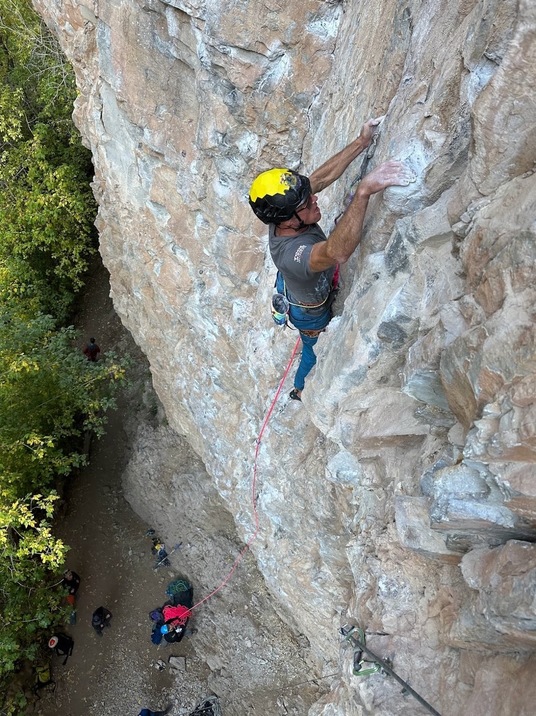
All this leads me to my initial point, that the crags are a great way to get better at someday climbing a true alpine test piece. Rock climbing season is here now and a lot of people like it for that in and of itself. I also find it a beautiful time to help me with my own mountain aspirations with a little specially curated focus and intention.

EXCLUSIVE Personal Training Plan Discounts For Skyward Mountaineering Clients
For the best in personalized training plans, we recommend those done by Steve House’s excellent services at Uphill Athlete. As a Skyward client, you can enjoy an Uphill Athlete training plan discount of 15% off any membership level and 5% off coaching! Just use the coupon codes SKYWARD and 5OFFCOACHING at checkout on their website.

Our Rock Climbing Guides: Your Partners in Adventure
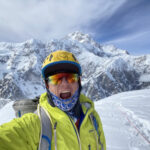
Vince Anderson
An IFMGA certified rock climbing guide with an adventurous spirit and decades of experience. Vince is known for his alpine expertise and has climbed extensively on Colorado’s big peaks.
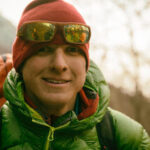
Steven Van Sickle
An IFMGA/AMGA certified rock climbing guide specializing in technical alpine routes and big mountain adventures. Steven loves exploring the high peaks of the San Juans and beyond.

Buster Jesik
An accomplished climber and certified rock climbing guide, Buster brings knowledge and passion for routes throughout the state, from the Front Range to the Western Slope.

Katie Beringer
A passionate rock climber, ice climber, and AMGA certified rock climbing guide, Katie’s enthusiasm is infectious, whether you’re a beginner or pushing your grade.
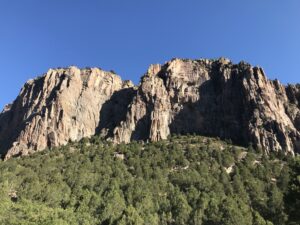
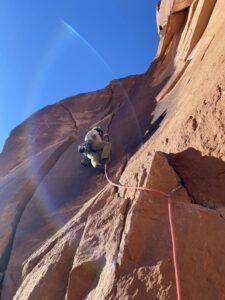
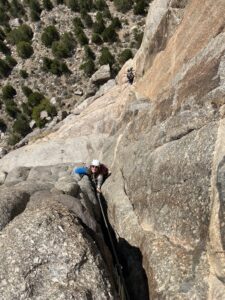
Ready to Take Your Climbing to the Next Level?
Let Skyward Mountaineering, Grand Junction’s premier rock climbing guide service, be your guide to unforgettable climbing adventures. Our local AMGA/IFMGA certified guides offer a wealth of experience and knowledge to help you achieve your climbing goals, whether you’re a beginner venturing outdoors for the first time or a seasoned climber looking to push your limits.
Skyward Mountaineering can provide:
- Safe and personalized climbing instruction for all skill levels
Guided climbs at Grand Junction’s hidden gem locations - Family-friendly climbing adventures tailored for kids
A supportive community of passionate climbers
Don’t wait! Contact Us today and let us craft the perfect climbing experience for you in beautiful Grand Junction, CO!
